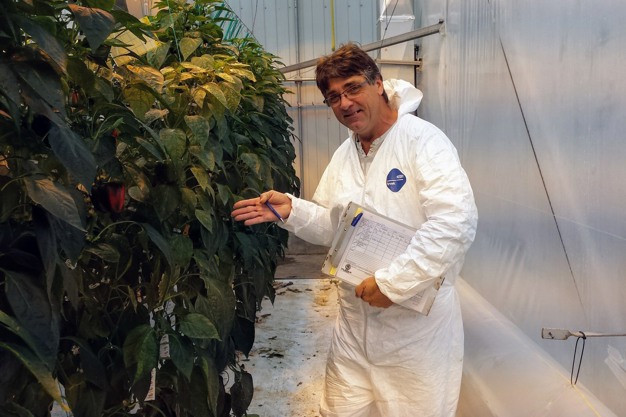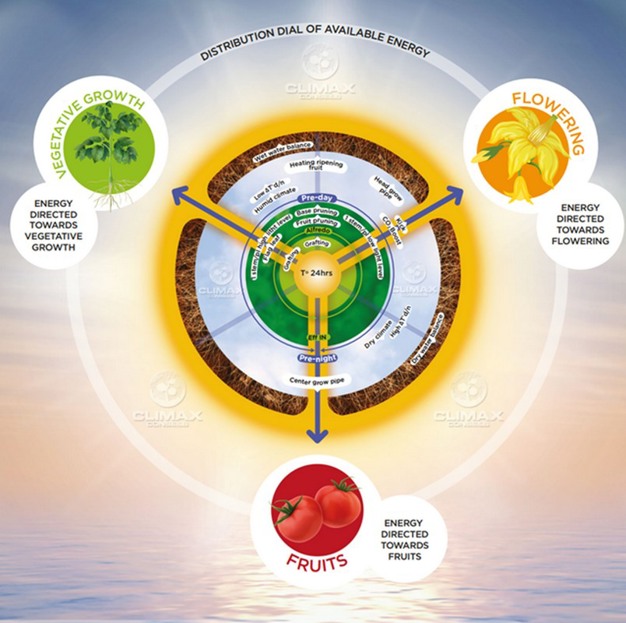"Understanding the crop physiology in greenhouse fruit-bearing crops requires a high level of skill," says Jacques Thériault, an experienced Controlled Environment Agriculture (CEA) consultant and senior partner at Climax Conseils, Canada. "You must control a wide range of parameters that are interconnected to achieve good yield and fruit quality. If you change one parameter, all the others must be adjusted to preserve the crop's balance."
He has introduced a visual tool to help small-scale farmers, researchers, and other stakeholders integrate crop physiology principles into greenhouse fruit-bearing crops. He aims to simplify the complex task of managing crop balance, particularly for those new to the field.

Jacques Thériault, Climax Conseils
Two-way system
For over 40 years, crop balance in fruit-bearing crops has been understood through a two-way system, expressed in terms of vegetative vs. generative growth and low vs. high vigor. However, Jacques points out that this model fails to capture the competition between fruits and flowers, which can lead to confusion, especially for less experienced growers.
"In 2009, we began developing a three-way system in Québec, Canada, based on the vigor of three competitive growing organs: the head (vegetative parts), the flowers, and the fruits," explains Thériault. "This approach, which we call the 'priority triangle,' provides a clearer picture for growers trying to understand how a plant allocates sugar and energy."
By assigning a percentage of vigor to each organ (head, flowers, and fruits), growers can better understand how their plants distribute energy and make informed decisions. "The priority triangle allows growers to visualize energy distribution, whether in non-limiting situations (usually high light) or limiting conditions, where energy is redistributed based on the priority of each organ," he adds.

The Climax Conseils visual tool
Delicate balance
According to Jacques, achieving the right crop quality depends on maintaining a delicate balance between the source (photosynthesis) and sink (sugar needs). He breaks down the critical components that influence photosynthesis and sugar distribution. "On one hand there's the source, the photosynthesis, which consists of the total daily light received (Day Light Integral, DLI), the leaf area available to capture the light, and the CO2 levels to support photosynthesis. On the other hand, there's the Sink, the Sugar Needs: the fruit load, including the number of fruits and how fast they grow, the vegetative parts, the stem density and growth rate, and the flower development. Though less energy-consuming, it is sensitive to competition with fruits and vegetative parts."
"The speed at which plants grow is a critical factor in crop management, and you can manipulate it quite rapidly through temperature adjustments," notes Jacques. For example, in a beef tomato crop, raising the average daily temperature from 17°C to 25°C can double the growth rate. "If your growth rate doubles, your photosynthesis must also double. That's why temperature management, in relation to the light sum, is key."
Jacques' system places the sun at the center of the triangle, representing the connection between the growth rate (24-hour average temperature) and the light sum (DLI). "Once you understand how to manage temperature based on light sum, you're well on your way to becoming a successful grower," he says.
Since 2006, Climax Conseils has developed a spreadsheet that helps growers, including more than 300 small-scale farms in Québec, to determine when crops are in balance, in a non-limiting situation, or in a limiting one.
In 2020, this tool was enhanced as a poster to include a dial-based system that integrates all known strategies for greenhouse crop management. Thériault and his team at Climax Conseils are offering a free short webinar this fall for those interested in learning more about how to use the poster.
To register, email [email protected], specifying your country and preferred language, and a registration form with available times will be provided.
For more information:
Climax Conseils
Jacques Thériault agr. M. Sc.
Senior Partner
Email: [email protected]
